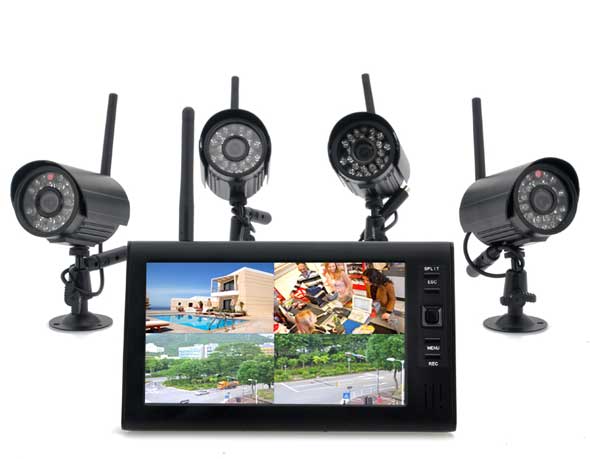If you are looking at various security cameras for home use, you will no doubt come across a few terms and acronyms that might confuse you a bit. If you want to pick out the best low-cost security cameras with the features that you need, then this quick glossary ought to help you make a more informed choice:
- NVR – network video recorder. In such a setup, the security cameras for home use process the video without the need for a digital video recorder (or DVR). The NVR then picks up this video feed before storing the video while simultaneously enabling remote viewing via Internet access.
- IP – internet protocol. Traditional home CCTV systems keep footage stored on an internal network. Surveillance systems that use IP digital cameras, however, are capable of sending and receiving videos to a separate device via wired or wireless Internet access points. An NVR is necessary to facilitate this process.
- Dot Matrix LED – a series of tiny light emitting diode (LED) lights that create patterns for the display of information. A typical feature for DVR or home surveillance cameras that provide information to the user at a glance.
- IR-Cut – infrared cut-off filter. This filter blocks infrared light that would otherwise distort the color of the video feed – resulting in a bluish tinge permeating everything in the said video. Household CCTV cameras without IR cut trade color differentiation for a lower price tag.
- D1 Resolution – records videos at SD, or standard definition, resolutions – meaning 720×480 pixels. This resolution is quite high when it comes to security cameras for home use – providing clear pictures but requiring pretty stiff storage space in exchange.
- CIF – common intermediate format. Records video at low-resolution quality – typically around 360×240 pixels. Typically used in budget security cameras, the resulting footage requires very little face but is blurry and pixelated. This can be problematic when it comes to identifying finder details like license numbers or facial features.
- TVL – television lines. This is the rating where video quality can no longer produce individual horizontal scanning lines. A higher TVL rating means a greater ability to produce clear footage, while lower TVL ratings mean that finer details in the video may become indistinguishable.
- PAL/NTSC – phase alternating line and national television system committee. PAL encoding systems have a TVL rating of 576 while NTSC encoding systems have a TVL rating of 480. When it comes to home surveillance cameras though, you will need to pick ones that match the encoding system of your devices. A PAL system will not work with NTSC TVs or DVRs and vice-versa.
- Kb/KB/MB/GB/TB – kilobit, kilobyte, megabyte, gigabyte and terabyte. These are the units used for measuring the capacity of various storage devices such as hard drives, flash drives and storage device cards. These terms are arranged respectively from smallest to largest.
- BNC – Bayonet Neill-Concelman connector, more commonly known as an RF coax connector. You have a male and female connectors that use coupling nuts to secure the connections, and are typically used to connect security cameras for home use to a DVR or to a TV screen.
Keep all these terms in mind and you will be able to better understand the lingo that you will encounter – and ultimately pick the best setups that suit your needs – as you browse the many different security cameras for home use!
Visit Chinavasion.com today if you are on the lookout for high-quality yet low-cost security cameras for home use. Individual consumers and intrepid entrepreneurs alike will find lots to like, what with wholesale-level prices and flexible bulk-order discount plans!



